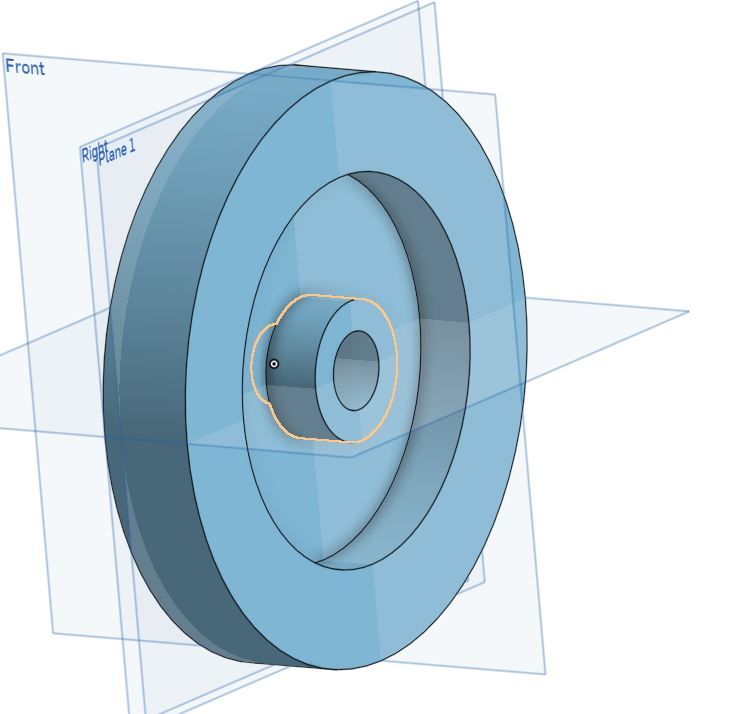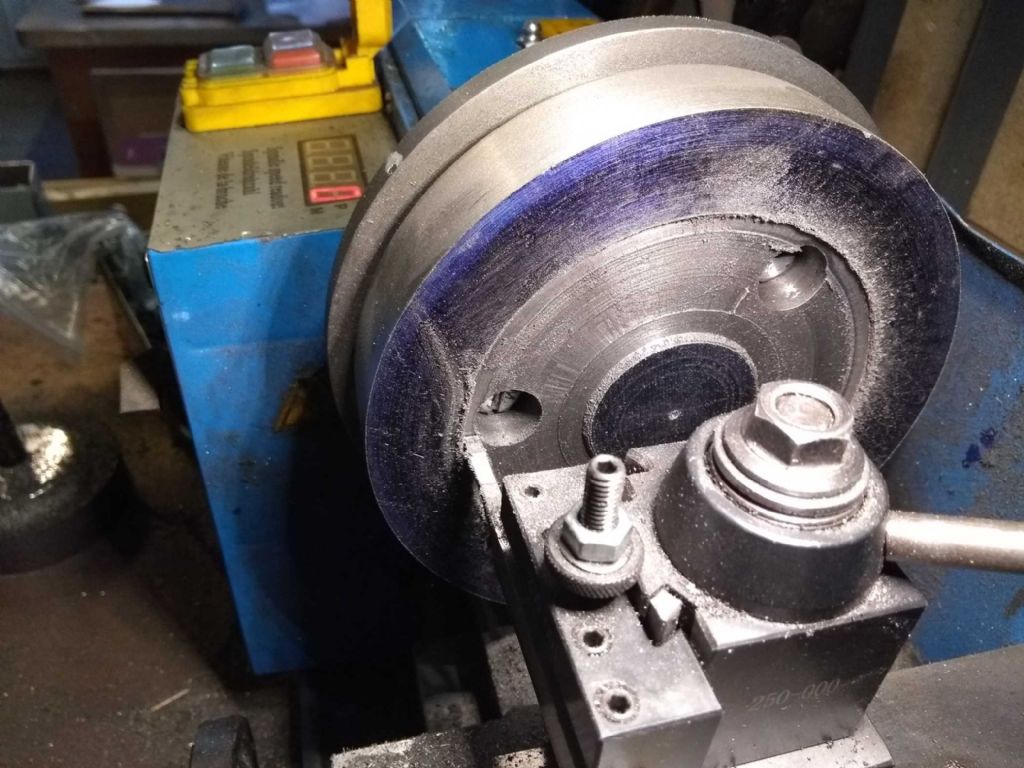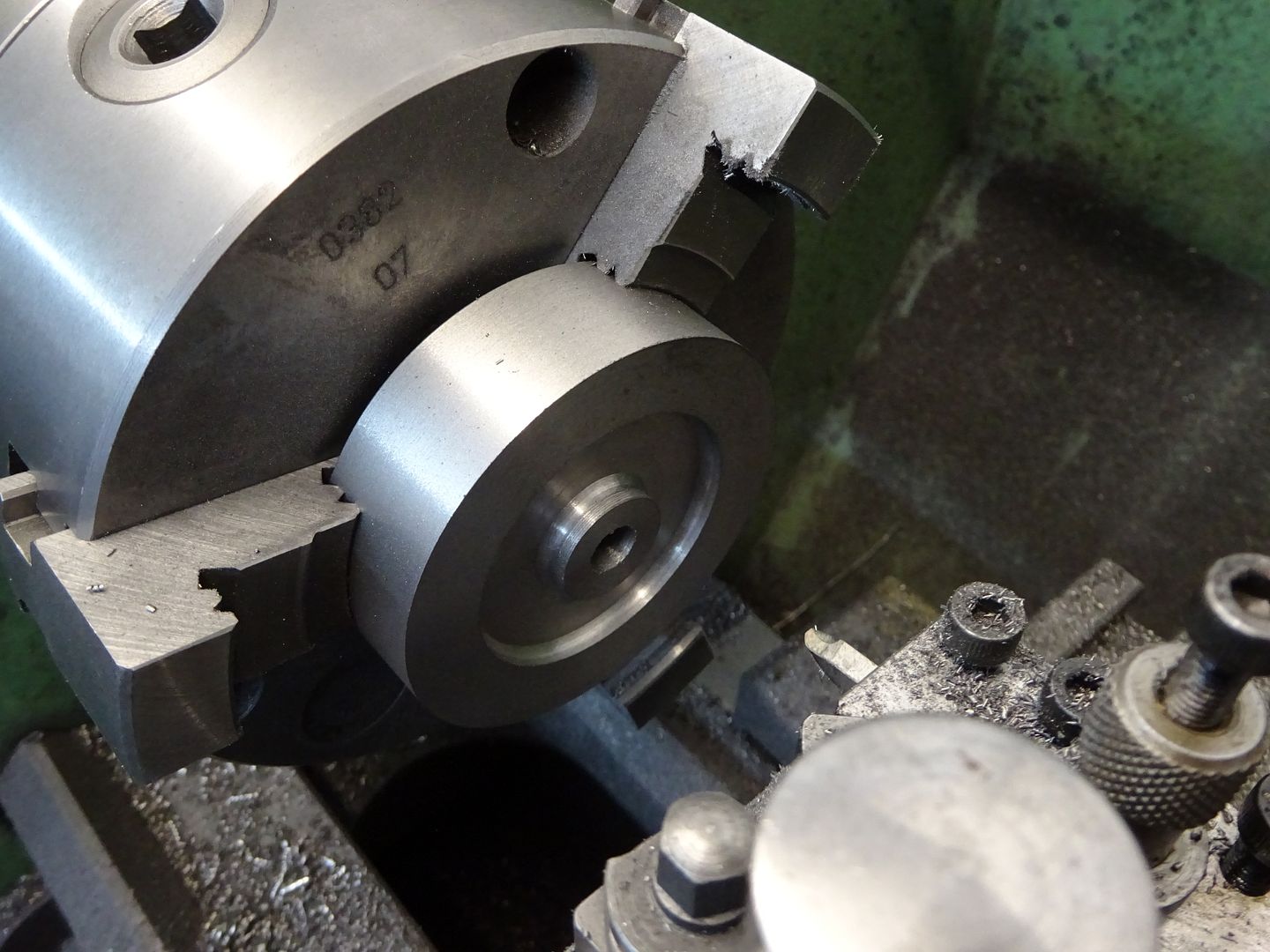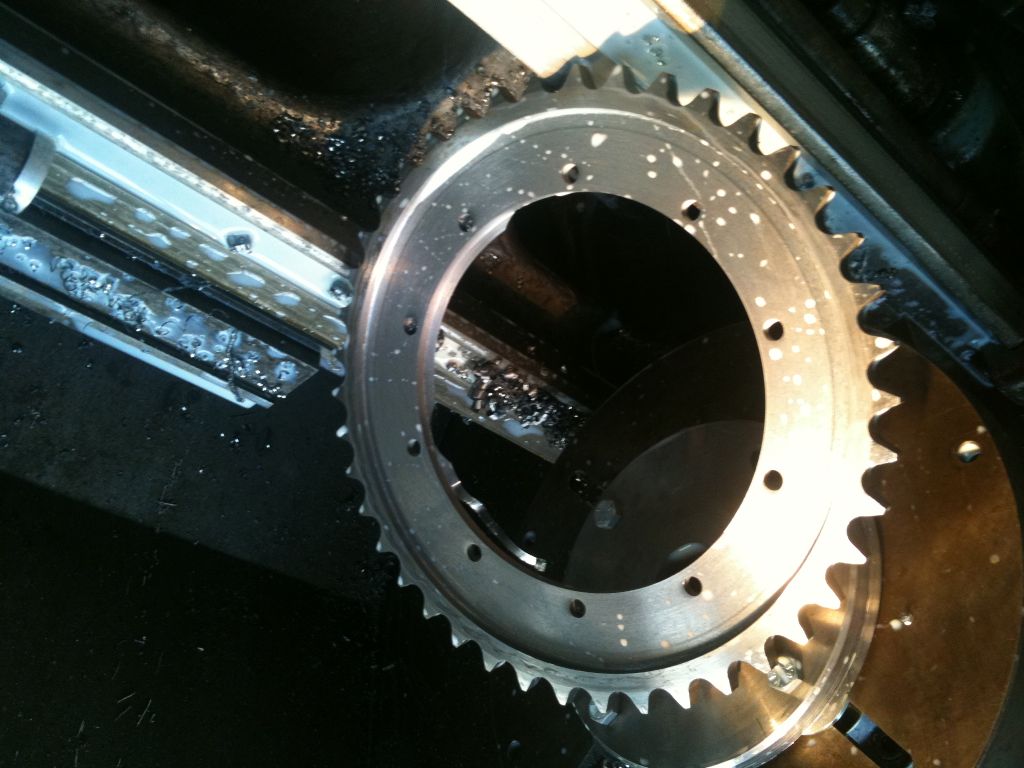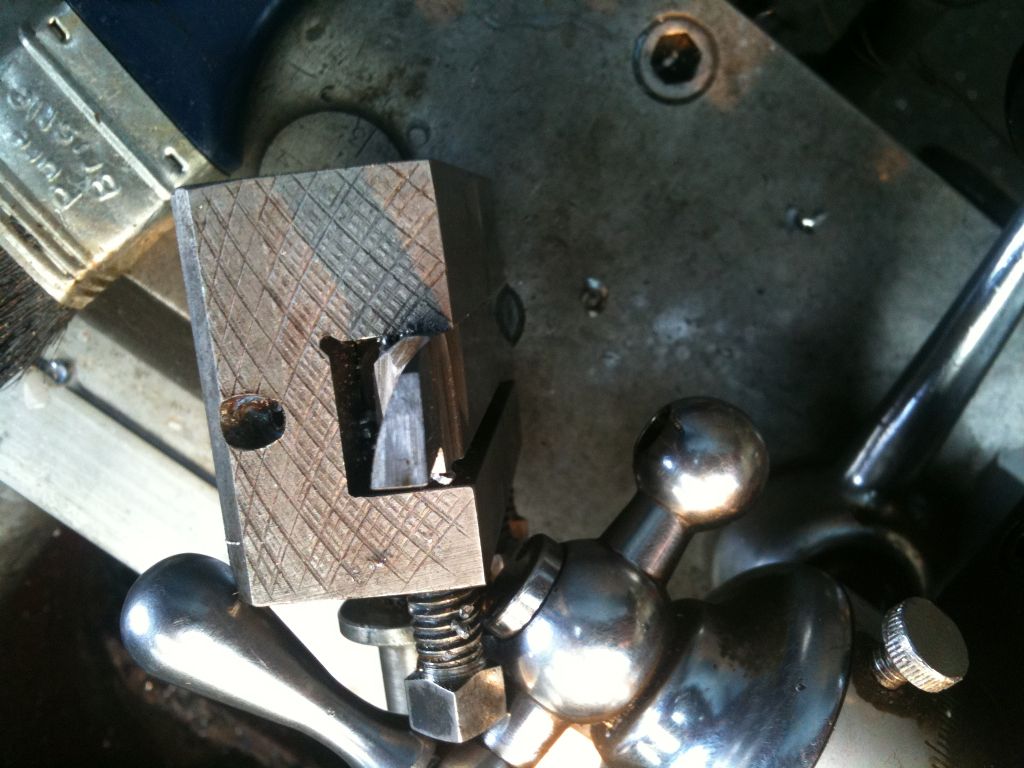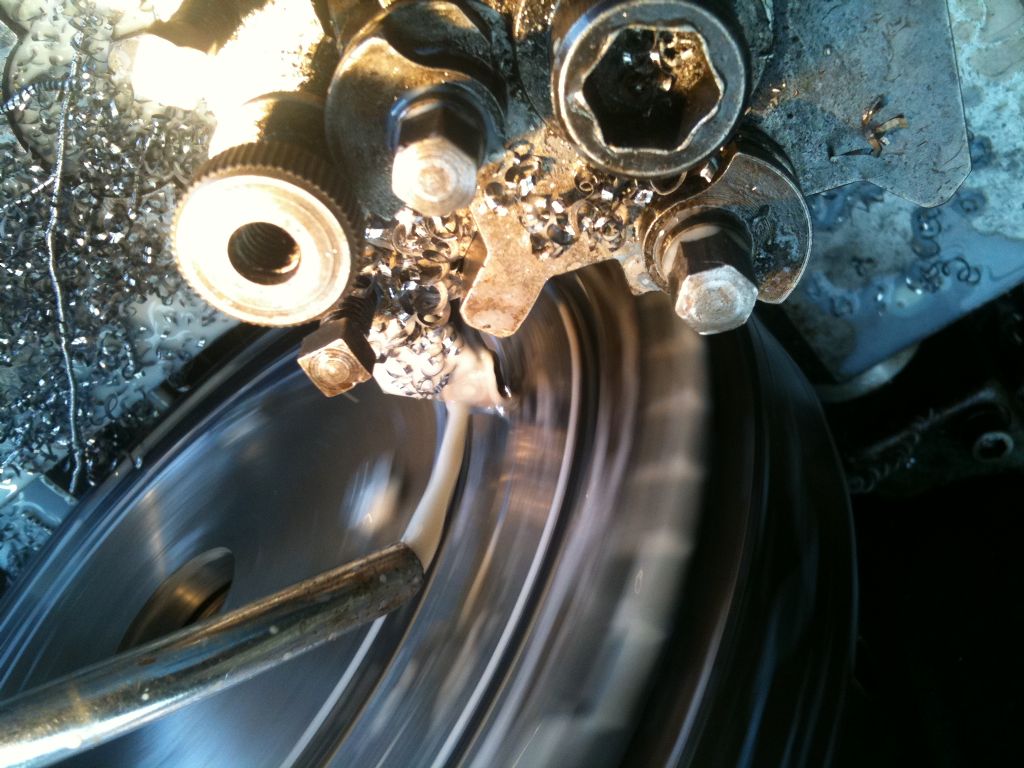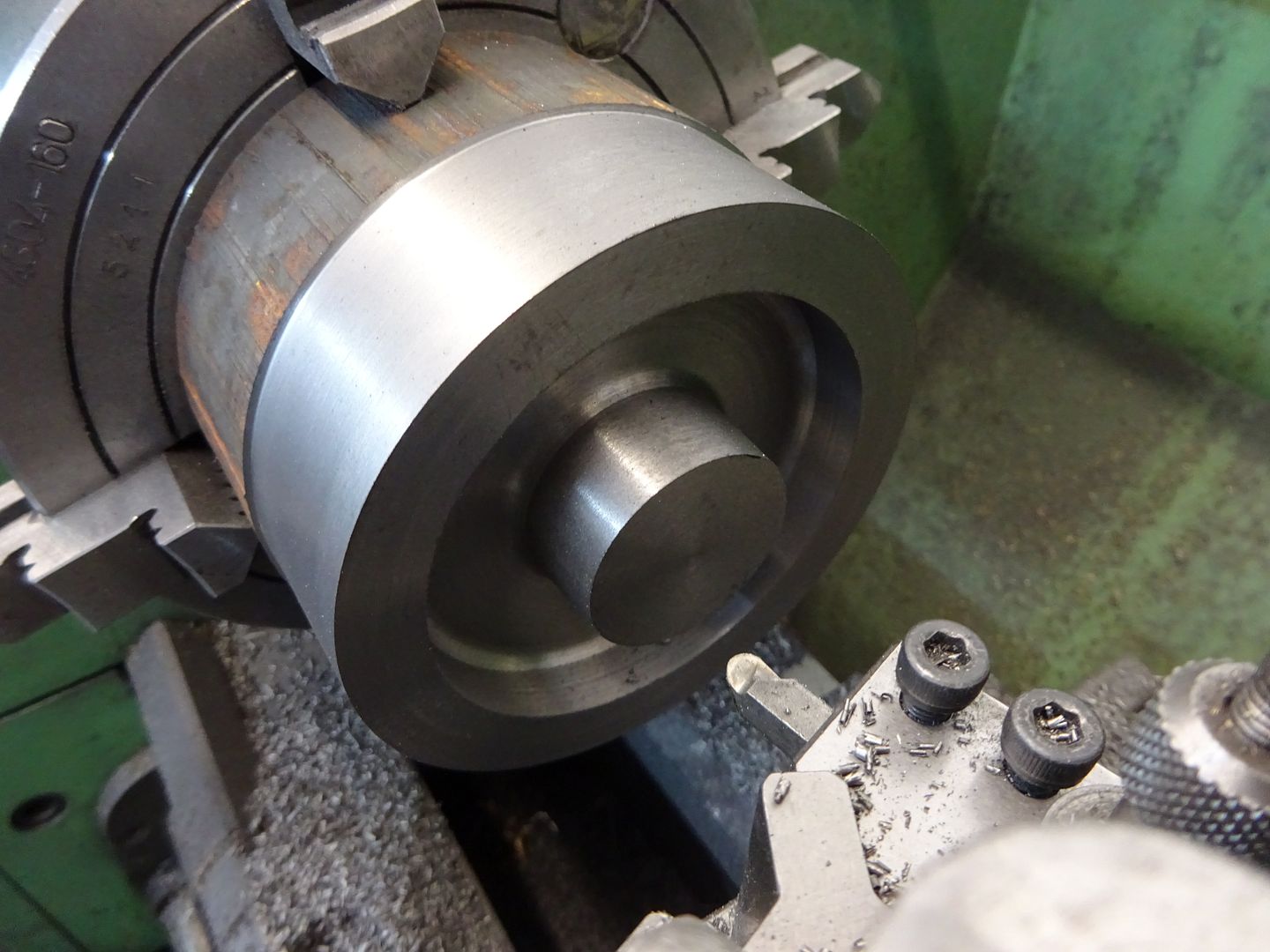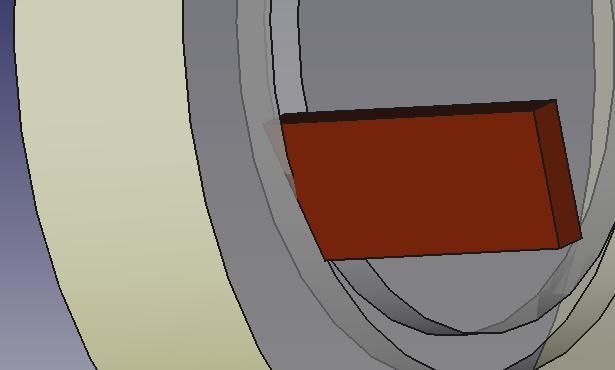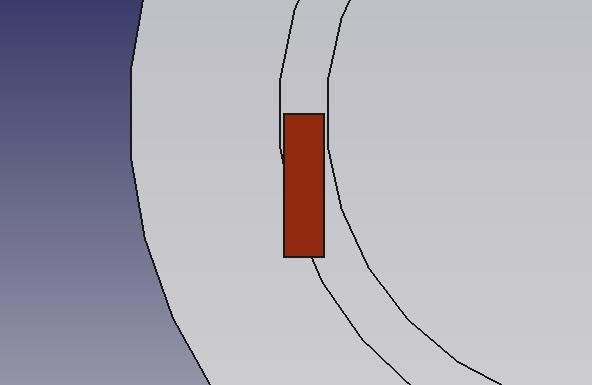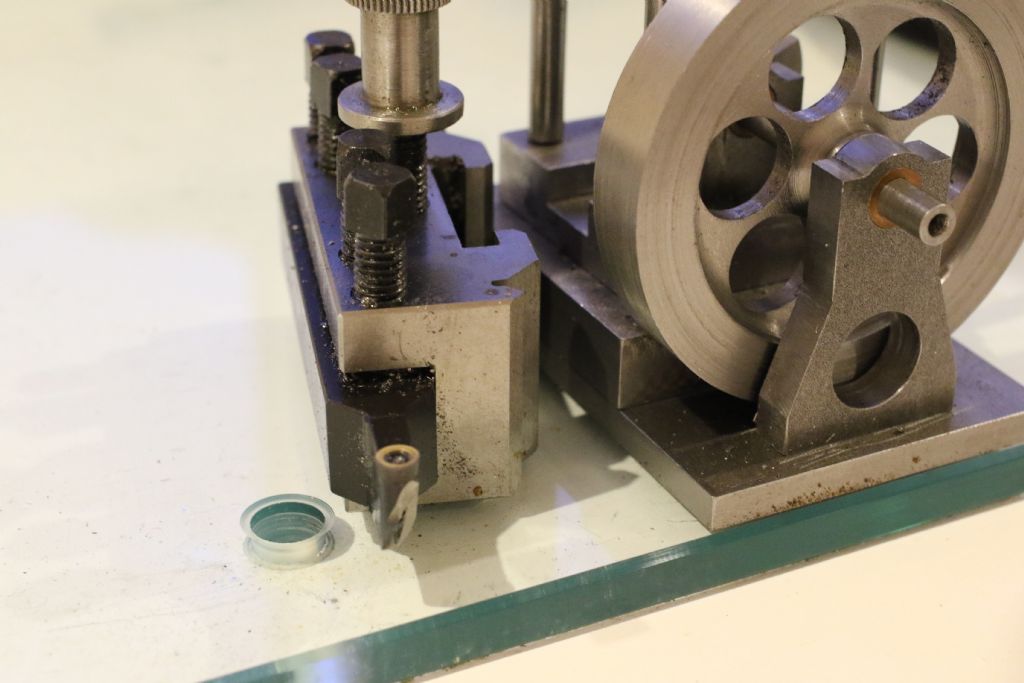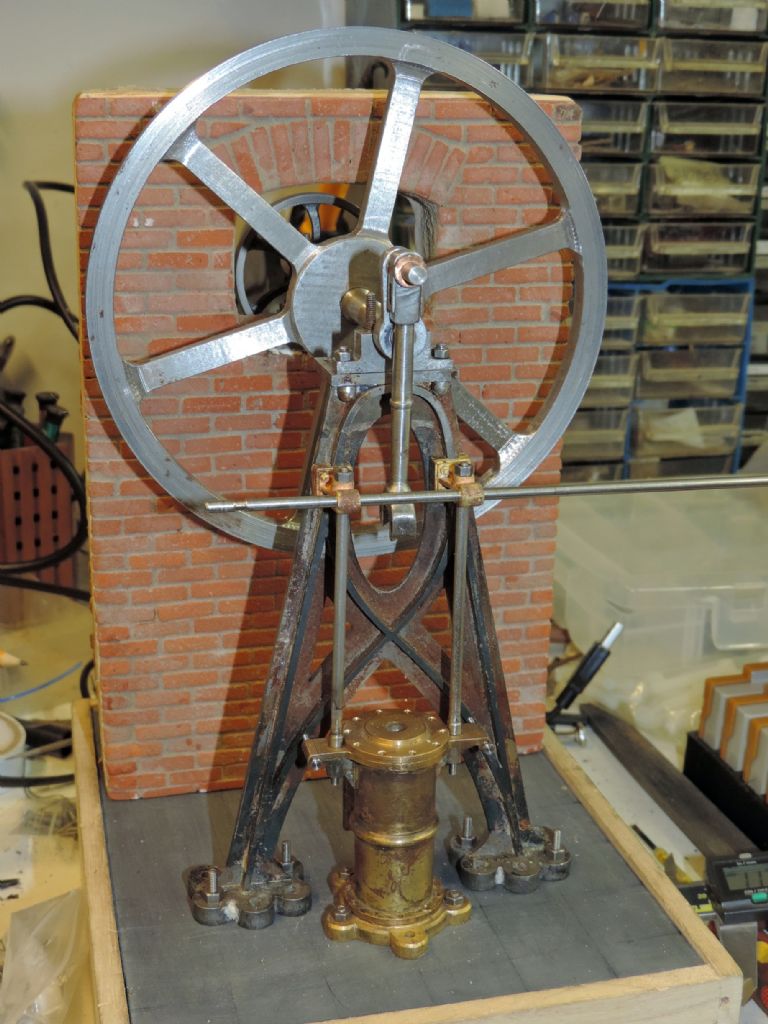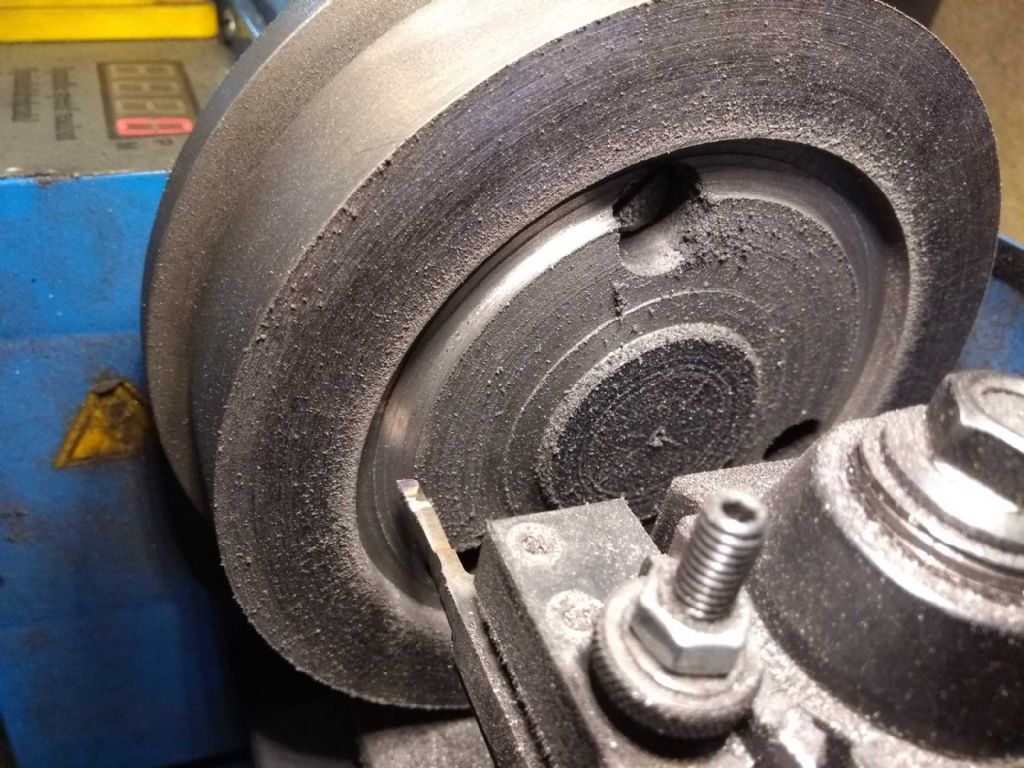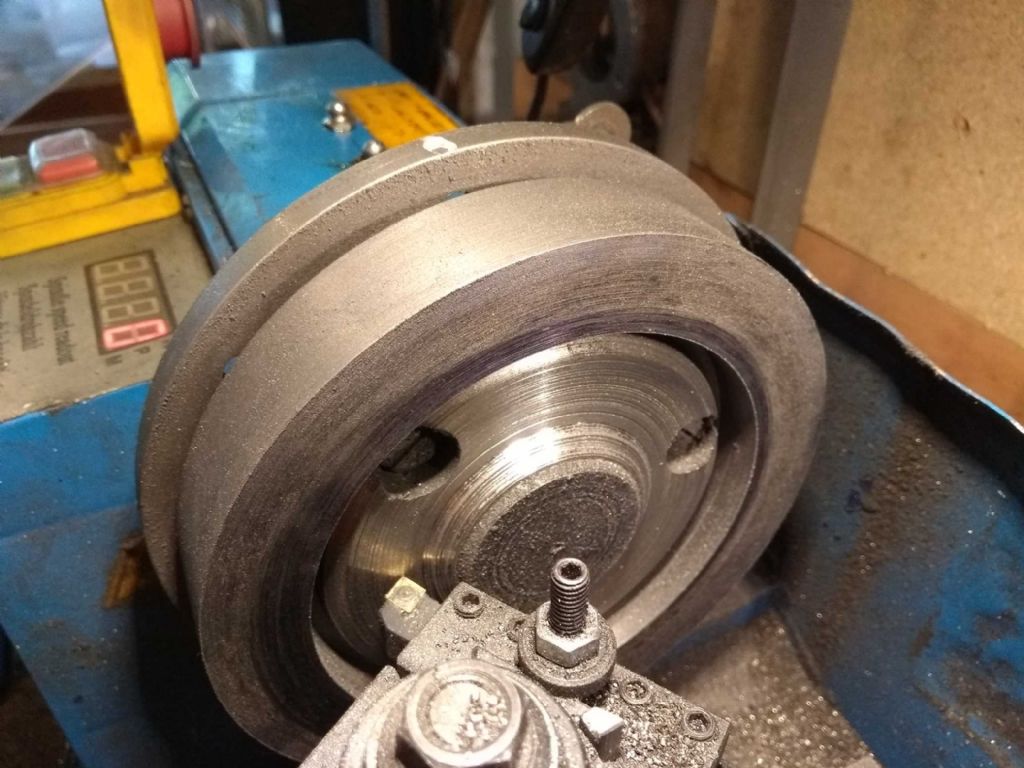Hi, All.
I'm in the process of building a flywheel for my vertical engine (covered in more detail elsewhere).
I have a 25mm piece of 150mm cast iron bar. I've mounted it on the faceplate by drilling some counterbored holes and bolting it to the face plate with some washers as stand-offs (about 5/6mm depth).
I've faced off and skimmed the outside.
Now I want to dig out the bits in the middle.
I've made a trepanning tool. The outside edge is covered to go inside the other radius (at about 55mm radius of the bar). The inside edge is more or less vertical. The end relief is probably about 10 degrees and the top rake the same. End width is about 4-5 mm (sorry don't have the tool in the house to measure at the moment).
I'm trying to cut at about 55mm radius, which is just outside the counterbored holes. I would have liked the outer rim to be thicker, but I figured that treppaning with an interrupted cut was just asking for trouble.
lathe is a REal Bulk CJ18A (500W 7×14 ish)
What am I seeing?
1. the best 'cut' is producing a fine dust, not chips.
2. I have to feed VERY carefully or the tool jams.
3. When performing the cut, it makes quite a noise.
4. If I pull out and widen the slot, I actually get chips from the 2mm cut so the tool is reasonably sharp (I keep sharpening it with a stone as well as attempting to tune it on the grinder).
5. There is often a resonance that roughly matches the rotation of the lathe. I've seen this on a lot of cuts. I can take very fine cuts until the resonance flattens out but it comes back.
6. I've tried speeds from about 100 rpm up to about 300. Lower than 100rpm and the lathe doesn't have the power to do anything. Above 200 I don't seem to get more cutting, but if I get a jam it worries me more.
7. I've put some side relief on the tool and as far as I can tell it's not binding, however, it starts to complain at about 0.5mm depth.
8. It's not helping that the saddle lock ( on to the leadscrew) seems to release from time to time meaning that the saddle creeps back rather than the tool forward.
9. I have the feeling that if the lathe had more grunt and more rigidity then this would go MUCH more smoothly!
10. After about one and a half hours of tender tool pushing, I've excavated a channel 4 mm wide and 4mm deep. I need to take 15mm deep out, excavate from 16mm to 55mm then turn it over and take out 5mm on the other side.
11. I've tried using some cutting oil, but that just clogs the dust together and makes a jam more likely.
I don't know if I should try getting rid of the top rake to stop it digging in, or increase it to make the cut better.
I've wondered about making the tool thinner so there is less cutting area, but that will also make it more fragile.
Trepanning is not much mentioned in the books I've got – and not much on the web either (except for some toolmaker videos where it's terribly easy if you have the right (expensive) tools and a big lathe)..
I'm thinking that putting it on a rotary table and milling it out might make more sense, but mounting it would be an interesting challenge.
Any help (links I've missed, pointers, tool profile, commiseration) would be appreciated.
Iain
ANDY CAWLEY.


